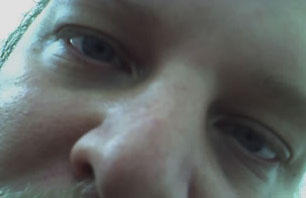Daily Verb"To go"ไป  þai
þai
"To stay"อยู่ yuŭ
yuŭ
Daily Noun"House"บ้าน baàn
baàn
"Hotel"โรงแรม rohng raaem
rohng raaem
Daily Adjective"Black"สีดำ seé dahm
seé dahm
"Red"สีแดง seé daaeng
seé daaeng
Daily "?" Word"Where?"ไหน hnaí
hnaí
"Where at?"ที่ไหน theè hnaí
theè hnaí
"Where to?"ตรงไหน đrohng hnaí
đrohng hnaí
Daily Other Word"here"ที่นี่ theè neè
theè neè
"there"ที่นั่น theè nàn
theè nàn
"over there"ที่โน่น theè nòhn
theè nòhn
Daily Qualifier"Dwelling"หลัง hláng
hláng
Daily Thainglish"Apartment"อพาร์ตเมนท์ ă phaád maehn
ă phaád maehn
"Flat"แฟลต flaaèt
flaaèt
 þai
þai"To stay"อยู่
 yuŭ
yuŭDaily Noun"House"บ้าน
 baàn
baàn"Hotel"โรงแรม
 rohng raaem
rohng raaemDaily Adjective"Black"สีดำ
 seé dahm
seé dahm"Red"สีแดง
 seé daaeng
seé daaengDaily "?" Word"Where?"ไหน
 hnaí
hnaí"Where at?"ที่ไหน
 theè hnaí
theè hnaí"Where to?"ตรงไหน
 đrohng hnaí
đrohng hnaíDaily Other Word"here"ที่นี่
 theè neè
theè neè"there"ที่นั่น
 theè nàn
theè nàn"over there"ที่โน่น
 theè nòhn
theè nòhnDaily Qualifier"Dwelling"หลัง
 hláng
hlángDaily Thainglish"Apartment"อพาร์ตเมนท์
 ă phaád maehn
ă phaád maehn"Flat"แฟลต
 flaaèt
flaaètThe letters for today are the letter BP... or þ (ป), the letter B (บ... just like the BP, but the right arm doesn't go up as high), and the vowel Ai (ไ- which is written before the verb it modifies). There are several kinds of "P", so we'll skip those for now.
Also, I've made a little of a change to the phoenetic spelling system we are going to use in these lessons. If you remember back to Lesson #1, sometimes an "ห" (an "H") appears in front of certain consonants which indicates that you to hold the consonant a bit longer. I'm now putting this in, so if you see, for example, "hnaí", that is a visual cue to say "nnnaí".
So the verbs for today are "yuŭ" (to stay) and "þai" (to go). If you are at home, then "อยู่ บ้าน" (yuŭ baàn). If you are going to the hotel, then "ไป โรงแรม" (þai rohng raaem). The R in front of rohng and raaem is not the hard, "English R", created on the lips, that you are familiar with. Instead, this is an R that is created by trilling your R... by bouncing your tongue off the roof of your mouth. For all words beginning with R, you never use the "English R" (such as rôt (car) from last week).
The adjectives for today are the colors red (seé daaeng) and black (seé dahm). The word "seé" is simply the word for "color". However, most Thai colors are "descriptive" words instead of actual colors... with red being an exception. So the word for black is "the submerged color". If you leave out the "seé", it can be confusing. As before, color adjectives follow the noun they modify. Therefore "red house" is "บ้าน สีแดง" (baàn seé daaeng).
The question words for today are "hnaí", "theè hnaí", and "đrohng hnaí". (The new consonant "đ" is a sound that is halfway between a D and a T.) The question words are all ways of asking where, but each one expects a different answer. The simplest one, "hnaí", is the general "where" in English. The second, "theè hnaí", indicates a wish to know the location of something, and the third, "đrohng hnaí", is a request for directions. So, if you want to ask where somebody is going, you would say, "þai hnaí". If you want to ask where a person's house is located, you would say, "baàn yuŭ theè hnaí". If you want to ask how to go to somebody's apartment, you would say "þai ă phaád maehn đrohng hnaí".
The other words for the day are the words for here and there. The saying "theè neè" is very common. The word "neè" is the word for here, but the "theè" part stays with it. However, you can say "yuŭ neè" to say "I'm here". As above, the "theè" gives a little more specificity to your statement. (However, that explanation is not what it does gramatically, so don't try applying "theè" to other words.)
The two words for "there" are "theè nàn" and "theè nòhn". The difference between these is relative. You use "theè nàn" when you can basically see what it is you are referring to. If you are referring to something that is not in sight, "theè nòhn" is the phrase you would use.
The qualifier for the week is "hláng", and is used in conjunction with dwellings, homes, and buildings. Therefore, "I have 2 flats" is "มี แฟลต สอง หลัง" ("mee flaaèt saáwng hláng").




No comments:
Post a Comment